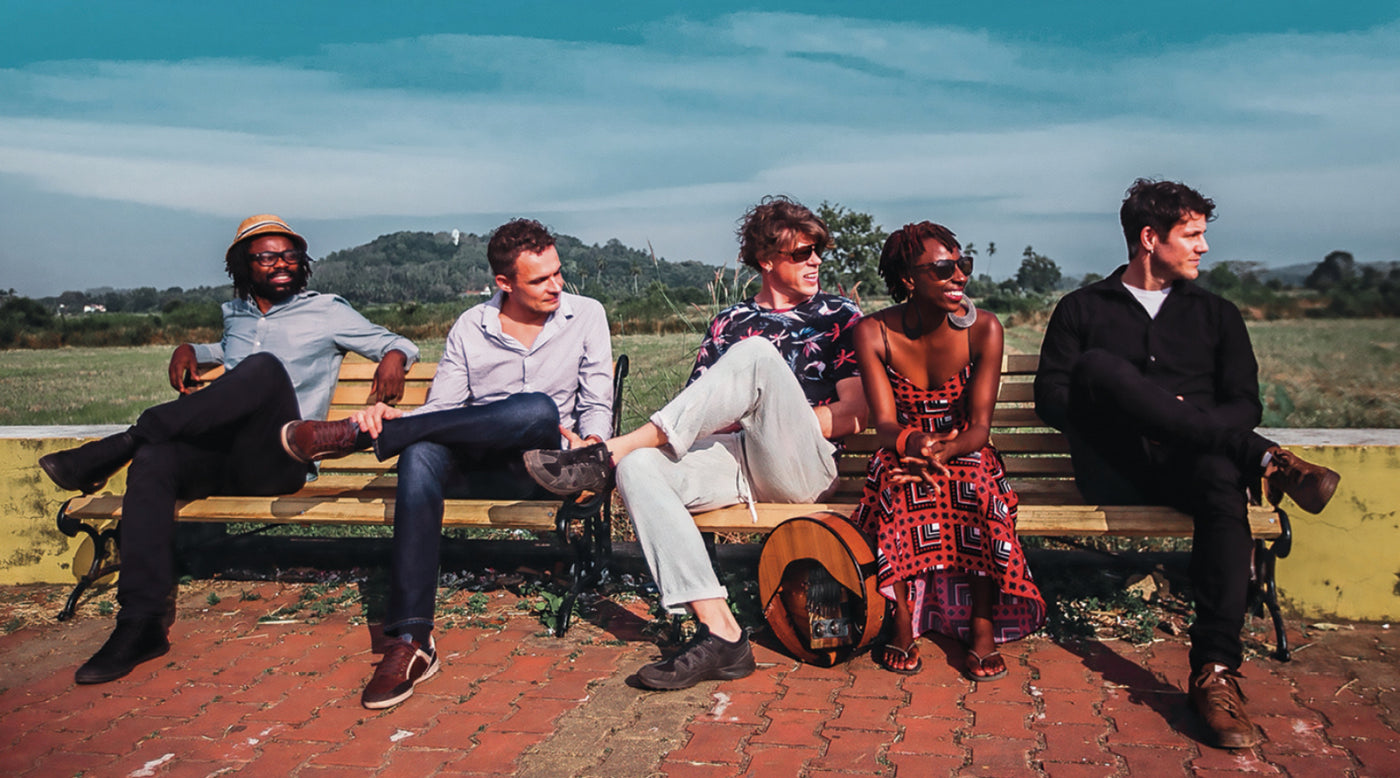Your Cart is Empty

By its very nature Monoswezi is a musical collective in a perpetual state of evolution, and Shanu charts the incorporation of new electronic elements into the band’s trademark Afro-Nordic soundscape.
Animation video by Ronald Kabicek to the song Kuwonererwa:
Shanu quite simply means ‘Five’ in the Shona language of Zimbabwe, home to the band’s lead vocalist and mbira player Hope Masike. This, their fifth album, is undoubtedly their most adventurous to date, as it sees them incorporate a more electronic approach to their musical soundscape. Central to this is the use of the Mellotron by composer and multi-instrumentalist Hallvard Godal, who wanted to harness its potential by adding more harmonies and colour to their trademark sound. In Hallvard’s own words, “I had played the Indian harmonium on some previous tours and the album A Je but was now looking for something more flexible, less characteristic, whilst still keeping some of the acoustic feeling, and the Mellotron had that.”
The name Monoswezi is an amalgam of the four founding member’s nationalities represented in their line-up – Mozambique (Mo), Norway (No), Sweden (Swe), Zimbabwe (Zi) – and the influence from each culture is audible. Salve to the ears of those tired of cosmetic “world fusion” bands, Monoswezi plunge across international waters to meld a meeting of musics that is well thought out, well executed and an audio pleasure to be devoured.
As the cosmopolitan band live across three countries (Norway, Sweden and Zimbabwe), meeting up in full is a treasured but rare occasion. Studio time is precious and experimentation the order of the day. Though unconventional, this working method imprints their music with a beautifully loose and open aesthetic. The music is not over-thought or preened to pretension, and these nine tracks evolved in typical Monoswezi fashion, by allowing the ideas to materialise on the spur of the moment rather than trying to reach a specific goal from the outset. As Hallvard says, “When I compose music, it’s not a very specific process. I play around with different ideas and things develop. I bring them to the band and we continue to work on them together.”
African music remains central to Monoswezi’s inspiration. Their compositional approach draws on Hope Masike’s Zimbabwean and Calu Tsemane’s Mozambican musical heritage alongside the rest of the band’s Nordic jazz tilt. A reading of the lyrics reveals a rich tapestry of different themes from storyteller Hope, from songs about losing touch and shunning one’s own heritage (Tsika Dzako) to the continuing problem of women’s inequality (We Crown You Nehanda) and greedy and selfish leaders (Zvorema). The role of the Zimbabwean mbira is paramount to Monoswezi’s style. Hope raises the flag for female mbira players everywhere, unlocking rhythmic routes through the sound on every track, including the fittingly titled ‘Where Is My Mbira?’, a song about yearning and looking for one’s heritage.
Renowned for their reworking of traditional Zimbabwean folk songs, Hallvard commented that often during the compositional process, he won’t be working with prior knowledge of the folk song in its original form, whereas Hope will have grown up with the tune and lyrics moulded into her musical consciousness. This difference in approach means the creative process can spin off in new uncharted directions, beautifully illustrated by the bands take on the traditional track ‘Hwiri Hwiri Hwiri’, an arrangement uninhibited by a sense of what’s right or appropriate to the original.